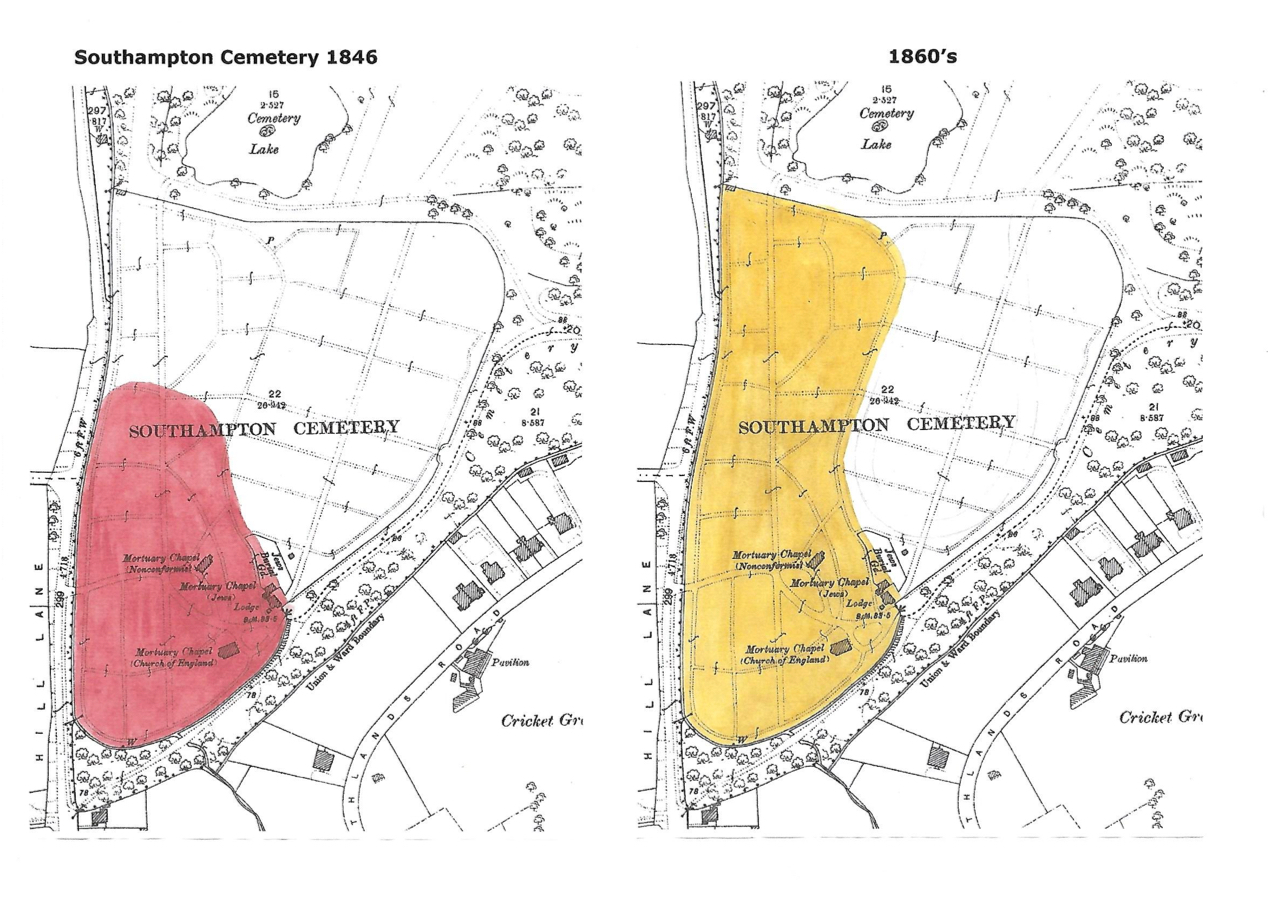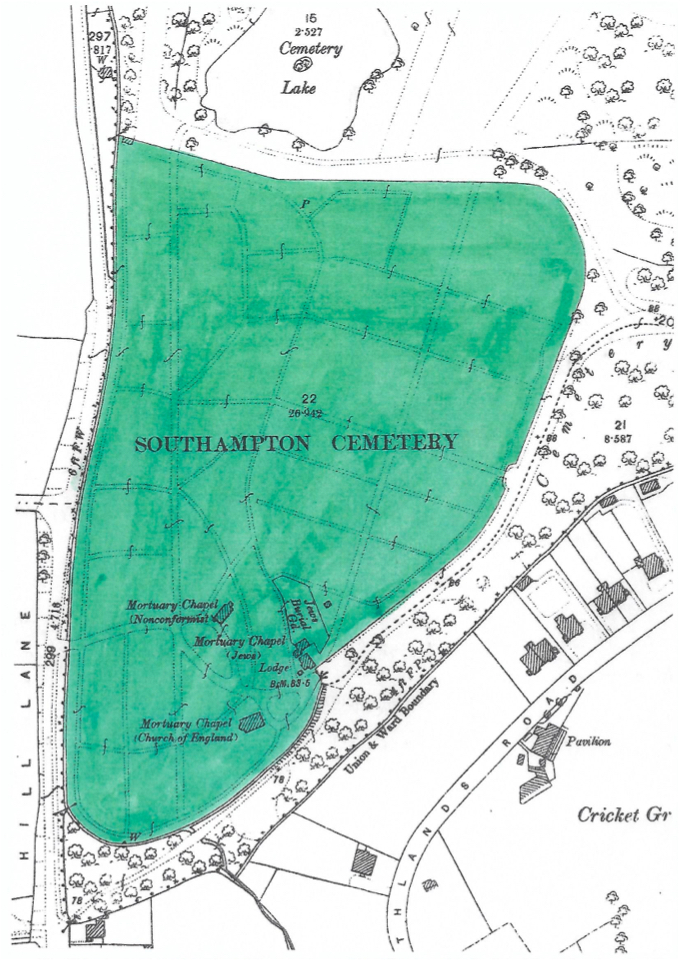History
The History of the Cemetery
The cemetery has had various titles including The Cemetery by the Common, Hill Lane Cemetery and is currently known as Southampton Old Cemetery. An Act of Parliament was required in 1843 to acquire the land from Southampton Common. The Cemetery was opened on the 7th May 1846 when the Bishop of Winchester consecrated part of the grounds. The following day was the first burial of John Peake, a 5 day old baby. It now covers an area of 27 acres and the total number of burials is over 118,000. Currently there are 6 to 8 burials a year to existing family plots.
Our Buildings
The Lodge
This was built for the curator of the Cemetery. He was responsible for the undertaking of all the burials within the cemetery and would keep all the records of those buried. Now a privately owned family home.
Jewish Chapel
Jewish Chapel was added later near to the the Lodge. All the buildings are still standing and are Grade 11 Listed.
Non-Conformist Chapel
Nonconformist, also called Dissenter. Gothic in design of stoneware rubble, very grey looking and extremely basic, very few faces or gargoyles. With simple stained-glass windows. Now used by Scrapstores.
Anglican Chapel
Church of England, Tudor style building with arch stained-glass (picture) windows and a small bell tower, around the edges of the roof are faces or gargoyles. The building was designed by Frederick J Francis, who also designed the Main gate, the building is now offices.
Plans
An Act of Parliament was passed in 1843 which gave control of 15 acres of Southampton Common to the Corporation.
By 1846, 10 of the 15 acres had been laid out and formed the new Cemetery, the remaining 5 acres becoming used for burial purposes from 1863
Decisions about the new cemetery were made by the Cemetery Committee, while overall co-ordination of the work was done by John D Doswell, the borough surveyor.


Layout
The town council approached John Claudius Loudon, a well known landscaper, designer of arboreta and cemeteries including Histon at Cambridge and Bath Abbey. Loudon normally based in London had been staying on the Isle of Wight whilst his wife was writing a book. The damp sea air had a debilitating effect on his health and he moved to take temporary lodgings in Southampton.
Southampton Town council had no previous experience of laying out a cemetery and was pleased that Loudon was conveniently available. They paid him £37 for his services but decided not to use his proposed layout, and in fact, Loudon died at the end of 1843, long before the Cemetery was laid out.
A vital first step was to ensure adequate drainage of the cemetery, and the contract for this work in accordance with Loudon’s original plan, was awarded to Arthur Few and William Capon. Responsibility for building the walls surrounding the cemetery was given to Arthur Few.
By the 1880’s a third phase of 12 acres was added, with an avenue of Yew trees. Making the cemetery 27 acres in total.
Become a Friend of Southampton Old Cemetery
Membership is open to anyone interested in the Cemetery and who support our aim to balance conservation with the need to protect its heritage and social history.